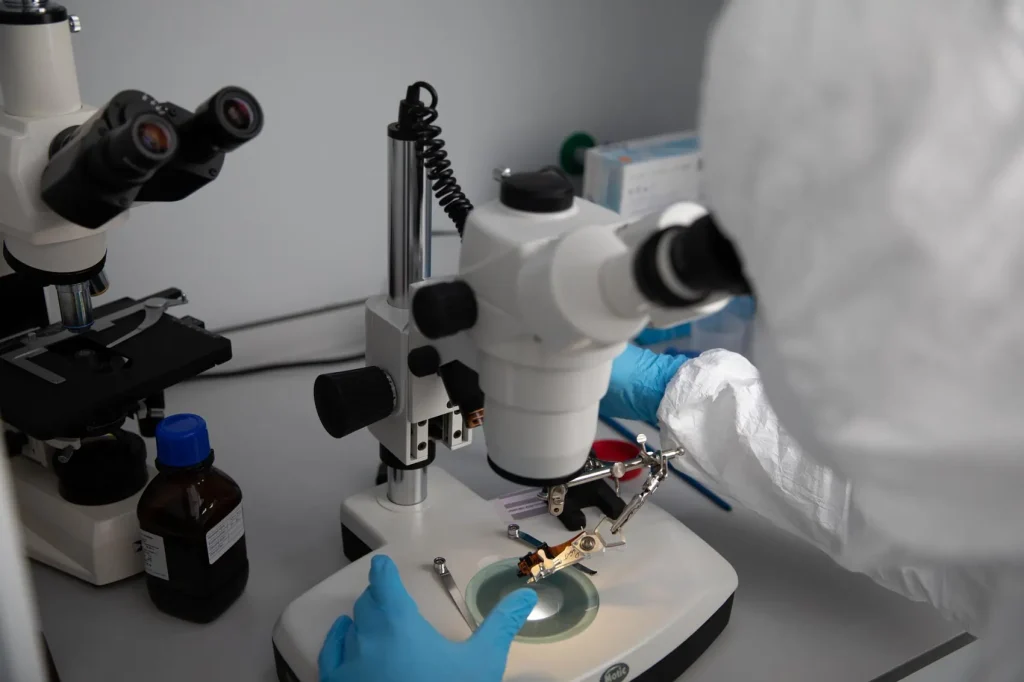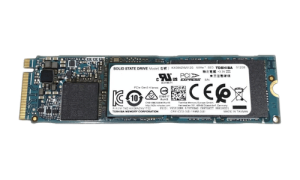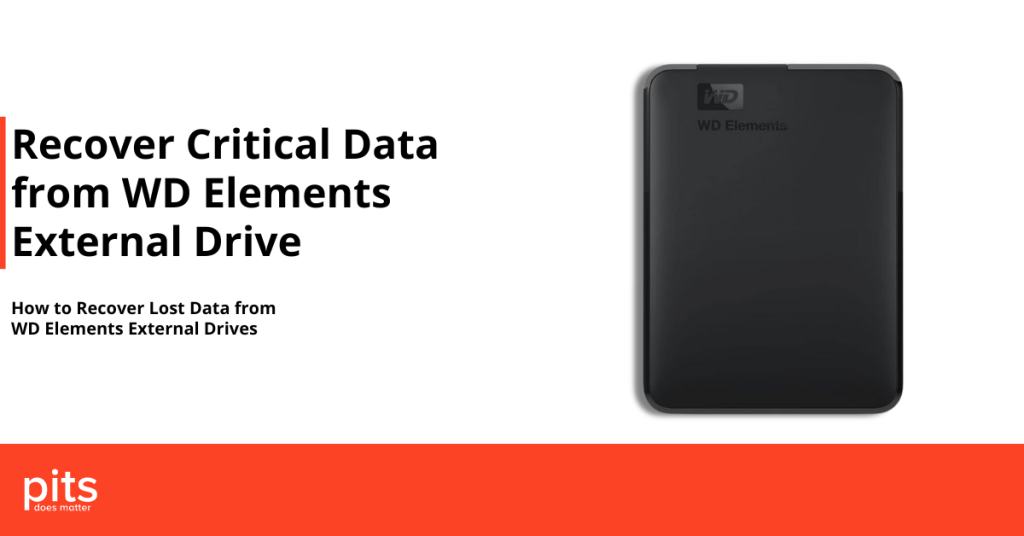When new generational SSDs hit the market, they promise higher speeds and better performance compared to their predecessors. Toshiba’s XG6 NVMe M.2 SSD was no exception, boasting high read and write speeds as well as advanced features such as power loss protection. However, even with these impressive specs, data loss can still occur.
In this case study, we will explore a real-life scenario where a Toshiba XG6 NVMe M.2 SSD experienced data loss and the steps taken to recover the lost data. We will also discuss some important considerations when dealing with data recovery for high-performance SSDs.
Data Loss on the M.2 SSD Due to Water Damage
The owner of a small business in Liverpool had been using a Toshiba XG6 NVMe M.2 SSD as the primary storage device for his work laptop. One day, while working from home, he accidentally spilt water on his laptop, causing it to shut down abruptly. When he tried to restart it, the laptop wouldn’t boot up, and there was no access to the data on the SSD.
He immediately sought assistance from a data recovery specialist to retrieve his valuable data. After performing some research online, he came across our data recovery services in the UK. He was impressed by our reputation for successfully recovering data from various storage devices, including high-performance SSDs.
Upon reaching out to us, we provided him with clear instructions on how to safely package and ship the faulty SSD to our main lab in London. The small business owner promptly sent the Toshiba XG6 SSD to our facility, where our expert technicians were ready to undertake the data recovery process.

Evaluation Process of Toshiba M.2 SSD in Cleanroom
Upon receiving the SSD, our technicians performed a thorough evaluation in our cleanroom lab, a controlled environment free of dust and other contaminants. This step was crucial as it allowed us to determine the extent of the damage to the SSD and devise an appropriate recovery plan.

During the evaluation process, we discovered that the water had caused corrosion on some components and short-circuited others, resulting in a complete failure of the M.2 SSD.
We contacted the owner and provided a detailed report of our findings and a quote for the data recovery service. We also explained the risks involved in attempting to recover data from a severely damaged solid-state drive and the potential outcomes.
After carefully considering our proposal and seeking advice from his IT department, the small business approved our plan and gave us the go-ahead to proceed with the recovery process.
How We Recovered the Data from M.2 SSD | Step-by-Step
Recovering data from a damaged high-performance SSD such as the Toshiba XG6 NVMe M.2 requires advanced techniques and specialised equipment. Our expert technicians followed a strict step-by-step process to ensure maximum chances of success while minimising further damage to the SSD.
Sourcing an Identical Donor SSD
To commence the recovery process, our first task was to acquire an identical Toshiba XG6 NVMe M.2 SSD to serve as a donor. An identical donor SSD is crucial for ensuring compatibility when transplanting components from the damaged device.
Extracting NAND Chips
To commence the recovery process, our first task was to acquire an identical Toshiba XG6 NVMe M.2 SSD to serve as a donor. An identical donor SSD is crucial for ensuring compatibility when transplanting components from the damaged device.
Preparing the Donor SSD
With the NAND chips successfully removed, attention turned to preparing the donor SSD. Our goal was to replace its NAND chips with those from the damaged SSD. To do this, we had to desolder the NAND chips from the donor SSD, creating vacant slots for the new chips.
Transplanting NAND Chips
Next, our highly skilled technicians transplanted the original NAND chips from the damaged SSD into the donor SSD. Precision is vital in this step to secure the new chips and establish correct connections to the donor motherboard.
Initial Testing Phase
After precisely positioning and soldering the NAND chips onto the donor SSD, we entered the testing phase. The purpose of this phase was to verify if the donor SSD could correctly interface with the transplanted NAND chips, thereby making the data accessible.
Data Extraction
Following successful preliminary tests, our technicians began the data extraction process. We connected the donor SSD with transplanted NAND chips to dedicated recovery hardware and software systems, which allowed us to read and copy the data.
Verifying Data Integrity
Lastly, the extracted data was verified for integrity and completeness. We needed to ensure that all critical data was recovered without any corruption or loss. Our team painstakingly cross-referenced the recovered files with the business owner’s requirements and original data structure.
Remote Customer File Verification Session
After successfully recovering the data, we contacted the small business owner and arranged a remote session to verify that all critical files were intact. Once he confirmed the recovery of his essential data, we securely transferred the recovered data back to new storage media and sent it back to the owner.
Key Points for Data Recovery on M.2 SSDs
Data loss can occur for various reasons, including physical damage, logical corruption, and firmware issues. However, due to their complex architecture, the recovery process requires specialised skills and equipment for high-performance SSDs like the Toshiba XG6 NVMe M.2.
Therefore, when dealing with data recovery for such devices, it is crucial to seek professional assistance from experienced technicians who have expertise in recovering data from high-performance drives.
Another essential consideration is taking immediate action when data loss occurs. In this case study, the small business owner acted promptly by seeking professional help, increasing the chances of successful data recovery.
Conclusion
In conclusion, with our advanced techniques and specialised equipment, we were able to successfully recover critical data from a severely damaged Toshiba XG6 NVMe M.2 SSD. Our evaluation process, step-by-step approach, and dedication to customer satisfaction resulted in a successful data recovery for our client’s business.
If you ever face a similar situation, don’t hesitate to contact us for professional SSD data recovery services. Our team of experts is always ready to assist you in retrieving your valuable data from any type of damaged storage media.
Frequently Asked Questions
How long does it take to recover data from a Toshiba XG6 M.2 SSD?
The time taken to recover data from a damaged Toshiba XG6 SSD varies depending on the extent of damage and complexity of the recovery process. After evaluating your drive, our team will provide you with an estimated timeline.
Is it possible to recover all data from a damaged M.2 SSD?
It is not always possible to recover all data from a damaged M.2 SSD. The chances of successful recovery depend on various factors, including the type and severity of damage, as well as the actions taken after data loss occurred.
Can I attempt DIY data recovery on my water-damaged M.2 SSD?
We highly recommend against attempting DIY data recovery on a water-damaged M.2 SSD. Water damage can cause severe corrosion and electrical shorts, making it extremely risky to handle the drive without proper training and equipment. It is best to seek professional assistance for safe and successful data recovery.
What should I do if my M.2 SSD shows signs of physical damage?
If your M.2 SSD shows any signs of physical damage, such as bent pins or cracks, do not attempt to power it on or handle it yourself. Contact a professional data recovery service immediately for a higher chance of successful recovery.
Can you recover data from a failed firmware update on an M.2 SSD?
Yes, we have successfully recovered data from many cases of failed firmware updates on M.2 SSDs. Our team has the expertise and specialised equipment to handle such situations and retrieve your valuable data.
Is it safe to send my damaged Toshiba M.2 SSD for data recovery?
Yes, it is safe to send your damaged SSD for data recovery. We take all necessary precautions to protect your device and its data during shipping, evaluation, and recovery processes.




